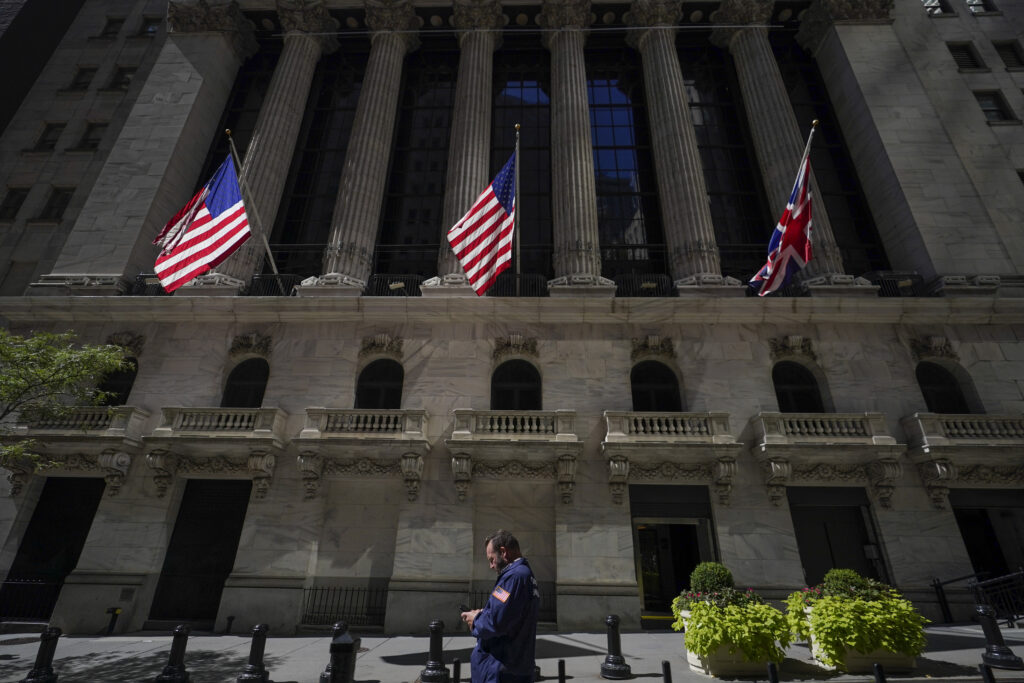Stocks fell Monday on fears that the Federal Reserve may continue tightening until it steers the economy into a recession. The Dow Jones Industrial Average fell by 410 points, or 1.2%, while the S&P 500 and Nasdaq Composite slid by 1.5% and 1.6%, respectively. The Associated Press has the story:
US stocks slip; Investors weigh Economy, Fed policy
Newslooks- NEW YORK (AP)
Stocks fell in midday trading on Wall Street Monday and bond yields rose as investors face a mostly quiet week that will be capped by a closely watched update on inflation.
The S&P 500 fell 1.3% as of 11:36 a.m. Eastern. The Dow Jones Industrial Average fell 410 points, or 1.2%, to 34,123 and the Nasdaq fell 1.5%.
The yield on the 10-year Treasury, which influences mortgage rates, rose to 3.58% from 3.49% late Friday.
Investors are weighing several international developments that could further unsettle a global economy that is already getting burned by stubbornly hot inflation.
Russia’s ongoing invasion of Ukraine continues agitating an already volatile global energy market. U.S. crude oil prices bounced around and were down 0.9% after a group of world leaders agreed to a boycott of most Russian oil. They also committed to a price cap of $60 per barrel on Russian exports.
China is lifting some of its most severe COVID-19 restrictions following protests across major cities. That has raised hopes that disruptions to manufacturing and trade will ease.
Markets in Asia rose, while markets in Europe slipped.
Inflation, rising interest rates and the potential for recessions throughout global economies are among the biggest concerns for investors. Wall Street has been closely watching corporate announcements and government reports to get a better sense of just how much damage is being done to the economy and inflation’s path ahead in 2023.
V.F. Corp., which makes Vans shoes and The North Face outdoor gear, fell 8.1% after warning investors that weak demand is crimping revenue. The company also announced the departure of its CEO.
Tesla fell 5% following reports that it may have to cut production in China because of weak demand.
Investors are dealing with several crosscurrents of information. Demand may be weakening in some areas of the economy, but some sectors remain resilient.
The services sector, which makes up the biggest part of the U.S. economy, showed surprising growth in November, according to the Institute for Supply Management. Employment remains a strong area of the economy as does overall consumer spending.
Wall Street will get a weekly update on unemployment claims on Thursday. Investors will likely be more focused on the monthly report on producer prices, for November, from the government on Friday.
The Federal Reserve has been aggressively raising its benchmark interest rate in an effort to tame inflation. The strategy is intended to make borrowing more expensive and generally hit the brakes on consumer spending and the economy. The risk is that the policy could send the economy into a recession.
The central bank’s task has been more difficult because of resilient pockets of the economy, like employment and consumer spending. It will likely have to remain aggressive in order to keep pressuring inflation.
The Fed is meeting next week and is expected to raise interest rates by a half-percentage point, which would mark an easing of sorts from a steady stream of three-quarters of a percentage point rate increases. It has raised its benchmark rate six times since March, driving it to a range of 3.75% to 4%, the highest in 15 years. Wall Street expects the benchmark rate to reach a peak range of 5% to 5.25% by the middle of 2023.







